An Interview With Warren Pilkington (2020 Edition)
Published: 15/11/2020
Warren Pilkington (Waz) has been involved with the c64 scene for decades in various ways. He's provided content for several magazines. He's a former member of HVSC and has ripped many c64 SID's for the cause. He's also an accomplished SID musician. Yet, he often goes under the radar due to his humbleness. In this interview we've enlisted the help from well known contacts. LaLa, Dan Gilgrass, Barry Thompson (Tomsk), Peter Clarke and Neil Carr (Tas) fire away the questions in this extraordinary in-depth interview.
What were your connections with various game magazines? And your current connection to Commodore Format?
I did back in the day, on a very old version of my website, write an article about my Zzap! 64 contributions between 1988 and 1991, and so an abridged version of that follows. Effectively, I had learnt my craft in doing cheats on the Commodore Plus/4, where the in-built reset switch and machine code monitor made me learn some initial 6502 machine code and enough to be able to do hacks for games on there. It was sad that none of those were published in say Commodore User, even though I had contributed a fair number of reset POKEs. I had also sent in some tips to Zzap! 64 before in late 1987 after I’d got my C64 as well, but nothing was doing at the time.
Undeterred, once I got my Action Replay cartridge, I started to look into more detail into the game code with its machine code monitor, and worked out if I was able to do some POKEs for games that way, and where possible, see if I could also reset the game and restart it again (as that was always handy for reset switch users). As I knew that Zzap! 64 were about to have a change of editorial staff in mid-1988, this might be a good time to start contributing. I sent over several tips for the game Stormbringer, which despite being the last of the Magic Knight series, was released before Knight Tyme on the C64, odd I know. I didn’t expect to see anything published, but there it was in the September 1988 issue, my first contribution to Zzap! 64. That was the shot in the arm I needed and looked at doing some more. I had just got Summer Olympiad by Tynesoft and was actually (shock) a decent game from that company. I soon worked out a strategy of doing well on all the events, hand wrote the tips out and then sent them along with a few reset pokes over to Paul Glancey, who was looking after the tips section at the time. I had them published, and indeed the ones for Summer Olympiad gave me Tipster of the Month and my first £30 software voucher. I was pleased of course, but the fact that what I wrote would help others was actually much more of a thing for me – I’ve always thought that helping others through games was akin to you getting a few friends together and working out how to beat a game, except these friends were the readers of Zzap!
Over 1989 Paul Glancey moved on, and first Maff Evans took over the tips section, followed by Paul Rand. Both were also appreciative of my submissions and I had some POKEs published across the issues that they looked after – and again, it was nice to help people out there possible. One the best ones I did was the invulnerability POKE for the Hewson game Eliminator, had fond memories of playing that one. It though changed for the better in late 1989 when Robin Hogg took over the tips section – he was passionate about making it work well and wanted to get contributors more involved. In fact, I can recall one of my music hack listings being printed incorrectly and thought it best to ring the office to get that sorted – little did I know at the time I’d actually end up having a good chat with Robin Hogg himself, and it was really the start of a good working time contributing. To this day I remember mapping the whole of the C64 version of Rainbow Islands, and sent it to Zzap!, and was just too late to be included, but I got a mention for the effort anyway which was nice to see.
To this day, I still have some of the typed correspondence which Robin Hogg sent to me, on Newsfield letter headed paper at that, as he had sent me a package with a number of games which he wanted me to construct a cheat listing or POKE for. I had mastered more of an art of doing listing POKE cheats now, and as there hadn’t been many hacks for disk games before (mainly just tape) that also resembled a nice challenge at the time. Certainly as well as the job I had was made redundant, I spent a fair bit of 1991 hunting for a new job, and actually having good regular conversations with Robin was really appreciated – yes, we’d talk the C64 and hacks, but we’d also talk about real life events. I distinctly recall one conversation where he'd been down to see John and Steve Rowlands one weekend, and they'd taken the mickey out of his loud shirts he used to wear, and I said to him 'well it wouldn't have made any difference when you threw up then eh?' to which he replied 'Well, it wouldn't have done, only I threw up over the pavement!'. The good-natured humour served us both well, and Robin was also interested in my job hunting and kept giving me confidence boosters – which helped massively at the time. I’d also got some initial indications from Robin in mid-1991 that things were not so well at Newsfield – he handed the tips section over to Mark Caswell, and the number of errors the Mac department did to a number of cheats thereafter weren’t helpful, and I could tell too that Robin was a tad worried about what was going to happen.
With the inklings that things at Newsfield were going under (and they did) I decided to see what Commodore Format had to offer. At the time Andy Dyer was doing the tips section and so I thought it worth a shout sending some tips and POKEs into him. What I didn’t realise at the time was that the tips section was being handed to long time contributor Andy Roberts (who had also been a regular Zzap! 64 contributor and challenged Robin Hogg on Thalamus’ Snare game – small world and all that.) Andy was pleased to see I was contributing, and straight from the off we got on very well, with numerous phone calls and lots of humour throughout as well. He was always very fair to deal with, and in fact I only dealt with him when it came to the magazine. That worked well for us both and he had the good grace to warn me that one of the bosses of Future Publishing would ask me to write for them alone – and bearing in mind I knew that Andy would take great care not to have the listing POKEs screwed up, that made perfect sense to me.
In fact, over the next four years or so, the arrangement worked very well indeed – I would contribute often and it wasn’t necessarily just new games, but also for older games that were requested in the popular Samaritan’s Corner section where people would write in and ask for assistance with games that they were stuck on. It really was a good productive time and one that I enjoyed a lot – primarily because it was a case of that if I needed the games to be sent to be hacked, that was doable. In fact, I am one of the few people who have played the original of Gauntlet 3 on disk on the C64, as I was sent a copy to do a listing POKE cheat for, not realising of course at the time how rate that game would be. Years later I discovered Mat Allen (Mayhem) inherited the copy from Andy Roberts, and that my name was still in the high score table from when I played it originally (in hindsight, I should have write protected the disk to keep the disk as was!) so definitely was a treasured memory of the time. I think as well that because the amount of games being released on the C64 were slowing down, people did go back to the older games so having the sections to deal with that meant it kept me busy anyway looking at those games for handy hints or some cheats too. If along the way I was allowed to keep a few of those titles, I always saw that as a bonus anyway – more often than not some of the games were on loan which I then sent back to Andy, but definitely a productive era for me and one that I can look back on with many fond memories too.
When Commodore Format ceased after 61 issues, a very good run in my view, I then worked with Jason Mackenzie (Kenz) for his fanzine, Commodore Zone, which ran for 16 issues in all. I was, for the first time, in charge of my own tips section, and pretty much wrote most of that single-handed. It was good though to be able to have the hacks for the previous issue’s tape and disk within the mag (or as extras on the disk version) and also be able to bring some new listing POKEs into play which needed to be done. The release schedule was more relaxed and it always was good working with Kenz, and have fond memories of heading to Droitwich on the occasional Saturday and spending some quality time there (in fact, my version of the Wizardry title theme was written in one afternoon in Droitwich, hence it was called Wizardry Live.) Incidentally, I did also write one other article for some time: The Covenant, The Sword and the C64 Soundtrack, which focussed on the C64 tunes which were actually cover versions of real life music pieces, pointing them out to the readership (which led to Dan Gillgrass’ demo of the same name having some C64 cover versions featured as one of the demos on a CZ covermount.) Think of it as a pre-release version of the SID Tune Information List (STIL) which does the same job in the High Voltage SID Collection (HVSC) but going into more detail about the actual composition as well.
I did also contribute to the one-off issue 107 of Zzap! 64 when that was put together back in March 2002. I did the two-page tips section, which was nice for me to do and it was good working with the likes of Iain Black, Craig Grannell and others to make it such an enjoyable read overall. Looking back, hard to believe that was my final ever game tips section, some eighteen years ago now. How time flies.
As for the Commodore Format website, it was first run as a fan site by Peter Holl, and I did an interview for that way back in 2001. Years later the site became the Commodore Format Archive, with Neil Grayson on board as editor. He wanted to really track down a lot of the old staff and interview them, and had Andy Roberts on board, so definitely a win at the time. The interview with me by Neil was in 2015, and it was good to see the site develop, and backed it when needed financially (it was after all a spare time project) including Patreon contributions which helped keep the site alive for some time. I hadn’t really written many articles for some time since the Commodore Zone days, and so wanted to give a fresh angle on something which would be of interest to the readers. When I was fixing bugged game tunes which happened to be around the time of the Commodore Format era, then it was definitely well worth a mention to Neil and to see if he was interested, which he was, and had Andy Roberts on board to iron out the technical detail to make it a little less techie. As I had fixed the Martin Walker music from Indiana Jones and the Fate of Atlantis on the C64 by comparing the note sequences in the Amstrad version and porting the code across (as it was the same composition) and a tough task, what I didn’t realise until I’d investigated were that all C64 tape and disk originals were bugged. What I also didn’t expect was Martin Walker himself to be contacted and to thank me personally for fixing the issues with the tune too. From there I contributed the Hudson Hawk one, and that was liked.
However, I had mentioned in an interview with The Retro Hour podcast that one day I’d go back and delve into Codemasters Multihack Simulator, a listing POKE which, with additional data lines, allowed cheating on over 140 Mastertronic, Codemasters, Zeppelin and other games which used the same loading system. It was really good to go back to that and explain how it all worked years later on, and by all accounts Neil told me it was one of the most popular articles ever read on the site, despite it being quite techie. This then meant I could do the inside story on fixing the infamous lives bug in Mayhem in Monsterland, which was published recently. Neil’s taking a little break from the site at the moment, but I know it’s in good hands and for me it’s been great to see memories of that magazine so well preserved, with new features and a good inside story from those in the know. It’s been a pleasure to give something back for all those many happy years of contributions.
So, Warren.. Of all the games you reviewed during your time at Zzap64 and even considering the games you played prior; If you had to pick 2 that were your favourites and worthy of the 'Waz' Gold Medal, which would they be & why?
I’ll split this answer into two parts: firstly, my contributions to Zzap! 64 spanned between September 1988 and October 1991, and although some appeared afterwards, they were remnants after I had agreed a deal to contribute exclusively for Commodore Format. So, what I’ll do is pick two from that era, and two from Zzap! 64s early years prior to September 1988, and Commodore 64 games only at that, even though I played and owned other formats.
Contributory Years:
- Last Ninja 2 (System 3) – by far the best of the Last Ninja series. The fiddly jumping in the first game had been fixed, the New York city setting flowed very well throughout the seven levels, and it also had Matt Gray’s finest work on the C64 as a soundtrack to back that up. It was also a game I remember getting from an independent computer game shop to ensure I got the mask and shuriken at the time (as retailers like Boots refused to stock it with those additions) – and the Eureka moment on the second night of play when I worked out how to exit the Central Park level was just one of those game moments I have very fond memories of.
- Emlyn Hughes International Soccer (Audiogenic) – yes, you can see the sprites with resemblance to Commodore’s iconic International Soccer cartridge. But for pure unadulterated football fun, this was superb on the C64. The controls were spot on, and you could head in from corners if you had it right too, and crucially, it had a good computer opponent who gave a fair challenge. Two player team mode was superb, and that really did mean longevity too. In fact, when relatives came around to my house, one of the first things they’d say was
Get Emlyn on!
– meaning this game, so understandably, very fond memories.
Pre-Contributory Years
- Wizball (Ocean) – my favourite computer game, on any format, of all time. Take an excellent idea of building up your weaponry and ensuring your bouncing movement is controlled, adding the Catalyte as the partner essential to picking up the coloured drops to ensure the cauldron was filled with colours, a sensible learning curve and difficulty curve, with some excellent graphics and superlative Martin Galway music, and you’ve pretty much got a great formula. The added touches such as the filth raid, the bonus stages and indeed the overall look and feel meant it deserved a Zzap! 64 Gold Medal – the biggest injustice of its magazine tenure that it wasn’t awarded one initially.
- Impossible Mission (Epyx) – it wasn’t just a platform game, but had so much more, the strategy to avoid the robots, the sensible use of the lift resets and robot snoozes, the Simon-type game to earn extras of those, and the puzzle pieces to collect and solve. Add to that a randomised layout of the 36 screens, and that iconic speech, and you’ve got a game way ahead of its time at the time. The sheer joy of completing the game is still something that I can remember vividly and going mental at such a good ending.
Looking back at your 30 plus years on the scene, what is it that you remember most fondly? What are you most proud of?
There are so many memories that it would be difficult to pin it down to just one. One of my main memories was contributing to the magazines and generally at the same time learning and understanding coding, so it was a good two-way method of learning and enjoying what I did. I think if I had one abiding memory from the magazine contributions, and it’s something I had alluded to earlier, was the good camaraderie I had with the likes of Robin Hogg and later Andy Roberts when doing contributions. They were the best people I worked with when contributing, no question.
I also do have one fond memory when I had my address published in Zzap! 64 if people wanted to contact me for game tips and POKEs etc. I ended up with a large package arriving at my house with around 30 Codemasters and Mastertronic games, and one reader who said If you get through all these, you deserve a medal
. Unwittingly, I soon realised of course that these all used the same loading system, so of course that helped when I had already started the foundations of the Codemasters Multihack Simulator (I wrote a full article for the Commodore Format archive on that) – but it was the fact that people were actually willing to send me their games in order for me to see if I could construct a listing POKE for. Back in the day, these were all by letter, no e-mail, social media, anything like that. In a way it was a better era – it was more of a personal touch when someone took the time out to mail you, and when you sent the letter back, and I used Mini Office II together with an MPS-803 printer initially and then a Star LC-10 with Centronics interface, it was a really good thing to be able to give that personal touch and hand-sign all the replies I sent.
If I had one thing above everything else that I would be most proud of, I would say it would be being able to salvage previously unheard of tunes from SID composers from their own work disks, or rescue bugged tunes and restore them to their glory so that the composers would be able to listen to them as they intended. I already touched on the Martin Walker one I did, but another one that stands out was working with Fred Gray to salvage one tune, where it clearly didn’t quite behave as intended later in the tune (it’s in HVSC as Mystery). He basically said if I fixed it, we could include it in HVSC, so it was a very good incentive for me to sort it. In fact, Fred was helpful too, giving me some ideas on how the player worked and what to look for, and eventually made the tune loop cleanly and sounded nice. Fred gave his thumbs up of approval, and that made me feel very happy and proud. It was for me, a humble thing to be able to give something back to the very SID composers whose tunes I had adored back then (and still do now) and to show that we cared so much about their work and wanted it to be properly preserved too. The sense of pride you get when a composer thanks you personally for fixing something like that is absolutely priceless, and that for me really did making the work feel all the more worthwhile – if they were happy, then that was all that mattered to me. I’m not one for the fame thing at all to be honest, I just like to be able to help and play a part.
What made you become a musician rather than just a coder or gfx artist? was it your love of music or the power of SID?
That is a very good question. I think I had dabbled in learning 6502 machine code with the trusty Action Replay cartridge when attempting to learn how to get infinite lives POKEs in games, so although I had some idea of code and how it all worked, I could never profess to being a proper coder and doing all kinds of fancy trickery on the C64. I learnt enough to put a pretty front end to a few bits of programming, such as raster splits and some sprite animations, but that was my limit really. I knew though that I could at least make those as a front end to something, and my GCSE results in Art and Design would tell you that I am definitely not an artist who can draw, paint, or anything like that. So, the obvious route to take in this instance was to see if I could write any music on the C64 instead.
I had of course felt inspired by so many excellent game soundtracks produced over the years which really made the childhood nicer (even if the games themselves were poor – Knucklebusters, anyone?) and it was pretty clear to my ears that the SID chip and its analogue sound definitely helped to convey that sense of not just atmosphere, but also musicality and composition, which was not necessarily something which you would get in the early years of games. As I had also contributed music hack listings for Zzap! 64 where you could listen to the music without playing the game, it allowed fans to be able to listen and enjoy the tunes, in the same way I would do so if I wanted to back then. I think too that it was a case of knowing that what would work best was where you were able to compose something that resembled your moods, thoughts and emotions in musical form, and how that fitted in to whatever musical brief you were thinking of at the time.
Of course, my love of music is something that I take very seriously. Growing up I thankfully followed my father’s route, which was rock, folk and even some synth too, rather than the more pop orientated leanings my mother would have. It led me in turn to attempt to discover bands and artists myself, and appreciate the effort put in to write composition, melody and words which have meaning. My music tastes these days are very eclectic indeed, and spans a wide range of styles and genres, so impossible to pigeonhole one style as such. It does mean of course that for me it was important to try and see if I could also get an idea of how their composition and methods would work, and translate some of that into how my own thought process works for composition.
So, I’d say that it was being inspired by the SID musicians and real musicians alike that made me want to try my hand at composing on the SID. That, and the fact that I had a little musical organ and my brother had had a keyboard (one of those Casiotone ones) where I could at least have a play around and see what I could come up with.
What makes you decide on a tune to cover ? is it just music that you like, or do you think hmm, that would make a great SID tune
I think when you’re covering a tune on the SID, in the majority of cases you need to be doing so because you like the original tune in the first place – the passion you have for the original track is already there and you need to be able to channel that into three channels, so to speak. Also, though there is a thought process with me that it’s nice to actually do a version of a tune that no one has done before, or an artist that no one has done before either, as that gives it a case of uniqueness. I’m currently the only C64 musician to have covered Kristin Hersh, The Darling Buds, Pop Will Eat Itself, Renegade Soundwave, Carter USM and Ned’s Atomic Dustbin, and many other indie/alternative artists too. Of course, it might not always hit the mark but the fact that you’re willing to try unchartered territory is always something that those who are fans of real music will always appreciate.
I know for example that my version of Nine Inch Nails’ Sin is one that people like, Dan especially as a fellow fan of the band. This primarily for me was because I saw that because the song is quite electronic and somewhat a little more minimal (in the main keyboards, drum and vocal) it would be able to be translated well. However, I also love the original song, so that instantly gave me a bit more passion into wanting to do it justice. I had the CD single, so it wasn’t just a case of doing the album version note for note, but to expand on that and make it more have various bits. The title of my version also comes from the fact part of it covers the Dub version of Sin on the CD, which has Trent Reznor blasting out Lies! Control! Sin!
in parts (specifically around 2:30 onwards) which I really wanted to get across well too.
Realistically, I usually do have a think about if I’m planning to cover a tune on the SID and also as well as the passion for the music, think about how I’d contemplate planning to get that into three channels, and if I need to do any form of noteplexing tricks, or intersperse the bass with the drum for example to save one channel (which I did for my version of Born to Be Alive) – but crucially for me, the main melody and vocal (if present) are absolutely key to getting the feel across. No point if they’re not there in my view as you need something that you can listen to and think I remember the original song
– no matter if you remix it, play it in a different key, the soul of the original track should remain intact.
If I had to rank the top three real music tunes, I’ve covered on the SID, then Sin would have to be one of those three. One of the other two would be The Bog (Swamp Mix) – which was more of something that Jason Mackenzie (Kenz) had requested I do for a demo, as he was a fan of BIGOD 20, and so sent me along a few versions of the track so I could listen and do it justice. I was pleased how that came out because it was appreciating why the original tune was liked so much, and how that would sound given a warmer analogue treatment and had fond memories of doing that on the C64 too. The third one would be 5000 Miles by She Makes War, which was the perfect opening to her Direction of Travel album (I had the original Pledge Music release where this was the first track) and thought it’d translate nicely, and hopefully by doing so I thought that there may be some SID fans who would check out an independent artist doing such good music (and raise awareness). She Makes War changed late 2019 and became Penfriend in 2020, but still producing some excellent music, well worth checking out in my view.
You have used several tools to create your sid music. What were the pros and cons of these tools and what did you settle on and why?
I have in the main used three tools to create SID tunes on the C64, and each of them had their benefits and drawbacks. I started off on Ubik’s Musik first of all and couldn’t really do so much with it initially, not because it was difficult to use, but because the compiler save to cassette was a tad buggy. I basically Action Replay backed up where I was at each time, and then could carry on where I left off. The sad thing was that by late 1990 I’d managed to do a good rendition of the Subbuteo Mix of New Order’s World in Motion, but alas the cassette backup eventually died, so it’ll never see the light of day. Once I got a disk drive, I could save properly, compile properly and use the relocator to move the saved music in memory too. It was a very powerful editor with a whole screen full of tweaks you could make to the voices, in order to get the sound doing what you wanted to do, and its sequence / repeats for each channel and individual editing worked well for me, and you could switch around up to 25 tunes, so you could work on bits and switch back. The downside was though that the player took a huge amount of raster time, so when coding a music demo you had to be very careful where to call the player itself in order for your planned raster splits not to glitch like mad.
I used that until around mid-1994, and switched over, initially on a trial basis, to the Dutch USA Team’s Music Assembler. This had the same sequence / repeats notation for each channel, but also allows transposition of that sequence in semitones, so if you had a bassline playing mainly in C, a transposition of 5 semitones would make it play in F, so no rewriting the sequence again when not needed. The voice editor concentrated on the main things you’d want to do (but had less functionality than Ubik’s), and arpeggios were a doddle here too. It also used much less raster time and was more friendly when you saved in that you could locate the data where you liked, and easily. It also allowed playback of just that sequence when in the sequence editor, and trace play so you could see if your tune played and looped properly – handy for troubleshooting. I think as well that I’ve got used to creating more different sounds here and working them into composition, and it really does work the way I do – and for that reason, it’s still my go to music editor on the C64 as I can quickly pick up back from where I left off and get going relatively quickly. I can also compose something in less time compared to Ubik’s as well in terms of work and effort.
On occasion, I’ve also used the JCH Editor as well, particularly the v19 version of the editor which apart from being slightly compromised in what you could do with it (as the player itself took up very little raster time) always seemed to be perfect when I was composing tunes for 4K intro competitions – when every single byte is key. You could put together a good little tune in as little as 1.5K if not less, and really give the editor a good push. I have used the full v20 and v17 versions of the editor as well, in the main when I’ve co-operated with other musicians, such as the joint effort between myself and Vincent Merken (_V_) when bringing together the suite of tunes for the Fairad demo by Padua. That was actually great fun to do as well as I was also learning more advanced features of the editor at the same time (the only downside of that editor, it wasn’t the easiest to learn.)
If I was to compose a new piece now, then definitely it’d be firing up the C64 and going for Music Assembler, every single time. I’d like to try out some of the PC based SID tracker editors of course, but there’s something a bit more wholesome about composing on the real thing – it makes for a more authentic feel in my view.
What was the biggest challenge you faced during the time you were at the helm of the HVSC?
I think for me there were two main challenges: one of them was the fact that I had to deal with a fair amount of negative feedback from users , mainly after updates were released, and people weren’t necessarily constructive, but pretty nasty. I didn’t really take to that well and I didn’t feel that the hard work the team put in should be shot at, so I did shield the team from a fair bit of that. I did respond politely and effectively said that ultimately, we’re a spare time hobby project (which it still is, incidentally) and that it would take some time to get to a point where everyone would be satisfied with what goes where, and which SID tunes are featured. Bear in mind we were in the days when most people had at best 56k modems at home, so each update ideally had to be small enough to fit on a 1.44MB floppy disk so those with access to faster Internet (at universities for example) could save the update to floppy, take it home, extract and install it on their home machine. Gradually as broadband became more normal that limit was removed, but it was one of many considerations we had to think about when creating an update – something some people may not have realised and were (because they had a fast connection) oblivious to the fact we were attempting to reach an audience who may have had varying connection speeds and wanted to ensure that everyone got the opportunity to listen.
The other main challenge was that some of the composers weren’t always happy that their tunes featured in HVSC, primarily because in some cases SID emulation didn’t quite sound the same back then as how the tunes were composed on their own Commodore 64. To be honest, a fair few of mine still only sound right on a real C64, but that was due to me pushing some unusual combined waveforms that really did need a real SID chip to sound correctly, so I did appreciate where they came from with that. I had a couple of notable instances where some of the composers were effectively asking for all their work removed, even though they had released their tunes on publicly available C64 demos in the public domain. It was a delicate process that the whole team was involved in, and emailed the composers concerned to basically put forward a sensible argument and how to work with them to keep their work preserved the right way. In the end I agreed with one composer that I’d approach them at first to ensure they were okay with any new demo tune going into HVSC, and after a while they realised that we respected their wishes and took them seriously, and that showed that we were to be trusted and taken seriously. In order to respect those composers, I’m not providing any names as I think that would be unfair – they were just looking after their work, and I did respect them for that and was attempting to be diplomatic as possible.
You have ripped many many C64 sids for HVSC. Can you give us an insight to how you go about ripping sids? And were there some sids you struggled to rip? Is there such a thing as an unrippable sid?
The art of extracting the music from the game (known as ripping) is not a finite art as such. Many composers would use a music routine where the music player and the music data (notes, sequences etc) are stored in one block of memory, with a routine called to initialise the tune, and a routine called once per interrupt to play the tune. These are the easiest to extract because you can look at the machine code, work out what routines are called, and then extract the part of the code which has the player and data. A lot of demo tunes for example use a number of available editors, where the saved data is in one simple block with an initialise at $1000 and play at $1003 (in fact, over 28,000 SID files in HVSC, over half, have that.) – so relatively easy to extract and play, more so for example in some cases if the file is on a C64 disk that you can just transfer without having to do any extraction at all.
Where it becomes a lot trickier is where the music data and player code are scattered across memory. You not only have to locate all of the locations where the data and code is, but then relocate them to one part of memory, and have a machine code routine to move that data back to its original location and then call the routines for authenticity. Because a lot of older games weren’t written with an editor or a known music routine, these were prime examples of memory scatter, which makes them difficult to extract out cleanly. Also, if the game used odd memory locations like where normally the screen memory is at $0400 (which of course would get trashed if you reset the game) the use of a utility cartridge is very handy to save those locations out, with potential to move elsewhere. Steve Rowlands would often put his player code there so it was difficult to extract out – in the end someone relocated the whole player in memory and worked out the way that the individual music data was referenced, including the character used as the flag for the end of the tune and note data, so was easy to construct a clean rip of the music and all the subtunes.
Up until support was added a few years back, any game which used BASIC for its language (and for its music) was previously unplayable in SID players. That changed which allowed for a considerable number of games to have their music extracted – in those cases, removing the BASIC lines not needed so that it’s as small and clean as possible is helpful, and keeps things neat and tidy where possible.
In terms of difficult SIDs to rip, any game that has a multi-load where there’s a different music routine and data in each load would prove difficult. For me, some of the Epyx Games series certainly fell into that category: it took me around three to four days to get out all the individual bits of memory from each of the events, as well as the opening title theme etc, and then work out a way that you would be able to call each of the tunes in the right part of memory, and put them in a safe location in memory prior to relocating any code needed so you weren’t overwriting anything. It proved very tricky to do, but was worth it when I managed to get that all done – to have the randomisation as well in the half pipe event where the tune picks random sequences at the 0:07 mark is something I’m still proud of being able to replicate.
I’d also say another difficult one, which took me a long while to do, was the music from Mastertronic’s Beat-It, the sequel to Jammin’. I had the game back in 1988 and years later I tried to extract the music, but with no joy, and constantly made frequent attempts over a number of years to work out what was going on, but no dice there either. I finally worked out what was going on when I cleanly ripped it in 2018: in effect, there were controls for the channels to play or not to play the notes depending on how many of the musical notes you had picked up during play. As this started on zero, this effectively meant that even if the music routine was called, unless you set the flag that all the notes were collected, you’d hear nothing. Once I’d worked that out, it was then relatively straightforward from there to get the tunes extracted and play that back. Still a little tricky too because the note data was in one place, the flags in another, and the music routine elsewhere, so needed to be relocated during the init routine, but pretty pleased with myself that I got it to work well.
The fact that a number of games from the early to mid-1980s still do not have their music ripped and in HVSC shows the rather spaghetti scattered nature of some of those games, with player code and data all over the place and often difficult to split from the game itself. In recent years I’ve gone back to a number of those old games and ripped them cleanly for HVSC of course, but there are still so many of them that would need extraction. So, whilst I wouldn’t say they were impossible, they are very tricky and needed some real specialist knowledge of the game and code to ensure all is well.
You've never really left the scene, from making music or writing articles… what still gives you the enjoyment as we know you don't do it for the applause?
I think for me it’s the fact that there’s still a valid amount of interest in the Commodore 64, and preserving the history of not just that, but all computers from that era and the memories it had for laying the foundation of games, and game soundtracks in general. I think it’s still a sensible challenge of both music and coding to be able to get everything into the limits of the machine: whether that be memory, graphics capability, or in my case when composing, the three channels of the SID. The music of the SID is such a wonderful analogue instrument that it will always remain a part of me, and I see it now that if I do composing, it’s purely for fun and to be able to put something together that I hope other people may like musically.
The other enjoyment for me stems from revealing how things worked, hence the likes of the multihack article in Commodore Format. I was asked many years ago about it all, and it was nice to go back and revisit it, and write it all down in hopefully something that was a good read (indeed, some of my contacts via LinkedIn said they loved the technical element, being a fellow techie!) I firmly believe that what you get out is only the same as what you put in, so if you’re writing a new game, composing a soundtrack, writing an article, doing a review on a Youtube channel and so on, you’re doing so for the love of the machines first and foremost and because you enjoy doing what you’re doing. Anything else doesn’t quite fit right with me to be honest.
Are there any stories You'd be willing to share from the early Back In Time Live events you attended?
I think the one story that sticks out for me was the third Back in Time Live event in June 2002, and the second Gossips one. I’d been invited to the Press Play on Tape rehearsals at a studio near Tottenham Hale in North London, and they were going through their paces with Pascal Roggen on violin and the late Ben Daglish on flute, being ever so typically madcap Ben and brilliant. There was a balcony part I was sat at (I think with Kenz if I remember) and it was good to see the band do their thing and show how much effort they were putting in.
They did Monty on the Run and Pascal did his thing with the violin, which even then sounded impressive. However, they closed that with the first two bars of the tune as if it were looping, which somewhat took away the impressive feel of Pascal’s playing. So, I had to say something – and said to them Why don’t you end it at the end of the tune at that crescendo? It’ll sound lots better
– and it was noted. Walking back with them around Holborn afterwards and seeing the old shop which still had the Commodore logo above the shop was all good fun too – they were all such great guys and you could tell they had talent (and years later, hearing their live version of Knucklebusters in Brighton in 2015 was another highlight)
On the night of course, when Monty on the Run was being played, I had no idea if they were going to do as I had suggested. But it was clear as soon as Pascal started the violin playing towards the end with the band in full flow that the fans were being treated to a very special performance, and as it built and built you could see the jaws dropping. The cheer you heard as that final note sounded right at the end was simply the loudest I’ve ever heard any audience of SID fans cheer a rendition of a SID tune done live – for me, the best live version of any SID tune to this day simply because the feel was so wonderfully worked and to end on that crescendo was a special moment. Ben Daglish summed it up perfectly: Wasn’t that amazing? How am I going to follow that with my little flute here?
(starts to play Ian Anderson of Jethro Tull-type flute) – Not a chance.
And if it impressed Ben, with all his musicality, then so should everyone else be suitably impressed.
The other memory that also remains with me was the first ever Back in Time Live event in Birmingham in May 2001. Looking back, there were some things which didn’t work out, but were worth a go of initially: having it in a midweek night, having a disco type vibe with the SID and dance tunes of the time, and no live acts playing. However, the main thing which was the key here was the VIP type event, with so many of the SID musicians and programmers attending and making it such a good conversation piece with people. I think you needed such an event to break the ice and in a way have the SID fans get over the initial fan worship of the likes of Rob Hubbard, Martin Galway, Fred Gray, Ben Daglish, Richard Joseph and so on. It was also really good to meet with other SID fans at the time too, and it was the first time I’d met some members of the HVSC team as well, so was good to be able to spend some time with that. In fact, there’s fond memories of myself, Adam Lorentzon and LaLa spending the next day in central Manchester and having the obligatory picture outside Ocean’s headquarters, old and new.
I think looking back as well, the main memory was one of being able to spend some time with people who shared the same passion, and we could chat about that but also other things apart from just the SID. I learnt early on for example of both the late Richard Joseph and Jon Hare’s love of progressive rock music (not surprising considering Richard’s musical history of course) and would be able to chat with them at future events about that sort of thing as well which was really good.
You've appeared on some video documentaries and even on a music video by MJ Hibbett & The Validators. Can you tell us about these contributions?
The main documentary I took a part in was what ended up being a multiple Blu-Ray set. Originally it was just to be The Commodore Story, detailing some of the history of Commodore machines and chatting to people about the computers and the memories they had. The producer, Steven Fletcher, saw I had backed the documentary and contacted me, as he recognised my name from the old Zzap! 64 contributions and asked me if I was okay to be interviewed on camera. It was not something I normally do, so thought it would be nice to do, and as I knew he was interviewing others, I didn’t want to have a mad dash around with kit setup and so on. It turned out he was also interviewing Mat Allen (Mayhem) as well, and as Mat only lives a few miles away from me, it made sense for us all to get together at Mat’s place, and one of the rooms of his flat was full of Commodore items and games, so would make a far better location and backdrop than my flat would to be honest.
Mat and I worked very well, having previously contributed to Zzap! 64 issue 107 when that had its launch, and I think the passion we had for the games and music meant that we bounced ideas off and chatted about all sorts. In fact, there was probably a lot that didn’t make the final cut of the documentary, including a full chat about Gauntlet 3 which I personally would have loved to see. It ended up being a long day, primarily not down to us but to the fact that it sometimes needed a couple of takes to get things to the director’s liking, so was glad to actually have it all done in one day and be able to put the point across nicely.
As there ended up being so much material filmed that wanted to be used, the main feature of The Commodore Story was around two hours, and ironically most of mine and Mat’s chat was about the VIC-20 as well as the C64. It ended up having another bonus disc called The Chiptune Story, which focussed more about the game music, and had many contributors to that who would talk enthusiastically about their compositions and what the SID meant to them. I’m glad that at least some of my chat about that was used, to an extent that I’m credited on Amazon and IMDB as a supporting actor, which is nice (did not expect that of course). The documentary did seem to get a little critical panning for the fact that it maybe didn’t tell the story as the viewer intended, but I think that was down to the sheer volume of material to choose from – inevitably, you were going to be disappointed by having a feature left out.
The MJ Hibbett side is something that sort of happened by a case of chance and being a fan of indie music. Of course, everyone knows the classic Hey Hey 16K and its accompanying video, as it was a real homage to the games of the past, particularly the Spectrum of course. The band did play Back in Time Lite 2005 in Manchester, and I liked their other songs as well as the fact they played the hit
twice. It got me thinking into checking out their other works, which I also quite liked, and vowed to see the band live if I could thereafter, whether it be Mark on his own as MJ Hibbett solo or with full Validators en masse. In fact, I ended up meeting up with the drummer Tim Pattison at a Wedding Present gig at Manchester Academy 1 and having a grand old time pogoing to some of their classic tracks.
Fast forward to 2007, and Autumn saw the initial inkling of what was eventually (until recently) a regular occurrence called Totally Acoustic, where all bands would play, unplugged, and just play their songs that way. I liked the music and so offered to Mark an option that I could go to all three gigs of a mini tour he was planning with another excellent acoustic musician, Sheffield-based Pete Green (who once wrote a song about former Grimsby Town and Everton footballer Phil Jevons) and handle any merchandise sales that they wanted to do, being merch stall man for the whole three date tour. I worked well, I’d meet them at venue, Mark would have a bag with the merch, I’d set up merch, sell, and Mark would take it back with him. It also meant I got to see the three gigs for free, so was a nice arrangement that worked out. It was three nights on the bounce: in Glasgow with The Just Joans, in Manchester with The 10p Mixes on Halloween night (complete with band in costume), and then in Bristol with Rescue Aid Society vs The Black Terror. It was a rather wonderful week and one that I do look back on with fond memories.
I kept in touch with Mark and his lovely partner Charlotte, and over the years got to see the band or Mark solo in numerous places, including a gig the day before my 37th birthday in London, and with my girlfriend too (which was the first time she had seen them.) The year before that, in 2008, the band were filming the video for It Only Works Because You’re Here (still my favourite song by the band) and wanted an extra to be in the video. So, I volunteered and ended up spending a Sunday afternoon on location in Enderby, near Leicester, before having a good natter and a chat with them all in a pub in Leicester city centre. It was a happy memory as on the way back to Leicester in the car, it was then that we concocted the idea of an actual phone ringing nine times (to mirror the opening lyric) at the start of the track, when on the album, and that was rather nice to do.
I had moved to Croydon for work in late 2015, which meant I could venture to firstly The Lamb and then its more recent home of The King and Queen (fact: Bob Dylan played there in the 1960s) to see more of the Totally Acoustic gigs, but also if for example Mark wanted some help with a video, it was easier to be nearer central London. He had an idea with his good friend Steve Hewitt (he and his wife Meg are also really good people) and Steve and I acted out parts of the song 20 Things To Do Before You’re 30, which was done one night near Russell Square station. The song and video were released in July 2016.
Fast forward to 2020, and I’ve had a small hand in two of the band’s songs: firstly, being part of the singing choir during the main chorus of the song People Are All Right (if they are given half a chance) – I can remember singing the initial take of that part with Ruth Miller from the band Po!, who was really good, obviously. And just recently, the new song I Don’t Have To Worry About That has me (and others) writing down things I no longer have to worry about, I’m writing the lyric I don’t have to worry about seeing any kind of point to modern jazz.
Niiiiiiice. Grrrrrrreat.
It’s my little way of giving something back for all the music over the years which I’ve enjoyed and loved, and it’s always a pleasure just to chat to Mark, Charlotte, Steve, Meg and the other Totally Acoustic regulars at The King and Queen, it made the midweek nights rather nice and was always something to look forward to. I can’t wait for those nights to happen once again when possible.
What most surprises you about what the 64 retro scene has become. What are your likes and dislikes with the current position, and which direction would you like to see it head?
To be honest, there’s been a resurgence of interest, primarily because of the fact that it’s a different challenge for those that are coding, but also down to the fact that there’s still an appreciative audience who love to play the classic games, and so having new games to play is a really nice feeling – who doesn’t like opening a package with a new game bundled on disk and cartridge to play and enjoy? I like the fact that there’s so much support for those and it shows that if you do a quality product, the purchasers are out there who still find massive enjoyment out of playing the old games. I think that resurgence is possibly the most surprising from the games side – the demo scene never ever went away and is still there and vibrant on the C64, and long may it continue in my view.
I think there’s also an appreciation of the fact that it’s regarded as one of the classic 8-bit machines (along with say the Spectrum, Amstrad, and so on) and you’ll often find now that a lot of people who review games will do so on multiple formats so you can get an idea of what games actually worked and played better on those formats. I have to tip my hat in the direction of Chinnyvision as one very good Youtube example, as covering the likes of the BBC Micro, Commodore 16 and Plus/4 and Atari 8-bit machines and giving them due respect with game reviews alongside the main formats is something I appreciate and like that position a lot, so it’s not just about say the C64 but the whole 8-bit computing era as a whole. It does open your eyes to how games looked and played elsewhere and gives you an appreciation of that.
What I really dislike about the current position is that some people see it as their right to claim all sorts of intellectual property that they don’t actually own, and then decide to take action against anyone and throw out all sorts of takedowns via Youtube and other media. Whilst we all do respect copyright, it has to be handled correctly and fairly – a perfect example is the music from the First Star games on RKO, where First Star asked that the credit for the music be given to the musician and them as a company, as they still own the copyright. This way, the remakes of the music were still allowed, but it respected the original source – it was an excellent compromise and showed the right way to co-operate.
In terms of future direction, I can see more games being released for the C64 and other 8-bit formats, and that will remain a small but healthy scene for those that like it. As for the remix scene, it’s a difficult one to call – there is an appetite for the remixes of course, but I think we have to accept that it’s a pretty niche market and that realistically you won’t be selling 10,000 CDs of a series of game themes, or packing out arenas to fans of the music – it just won’t happen. The commercial aspect may still handle released, but even that is shrinking – with every new Matt Gray remix album for example, the number of backers has reduced every time. Playing games is more accessible to most and inevitably those memories will be where it remains for most – it takes a more diehard fan who not just appreciates the SID soundtracks, but wants to also then spend a lot of time working on a remake of that and giving a new lease of life to what was an iconic soundtrack back in the day.
Warren has done so much for the scene in so many varied ways, yet, he goes quietly about his business. It's with certainty that you would have come across his work at some point or another without realising it. He's spent decades providing hints, tips and pokes. He's also created some fine SID music as well as ripping SIDs for HVSC. It doesn't stop there, either, as he has contributed to so many scene related ventures as you can tell from this interview.
/Neil (Tas)
Thanks for the arranging of Monty on the run Warren, it really made that piece punch for the show:)


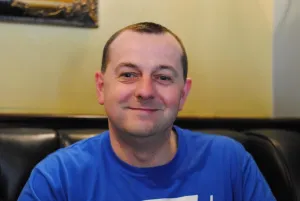
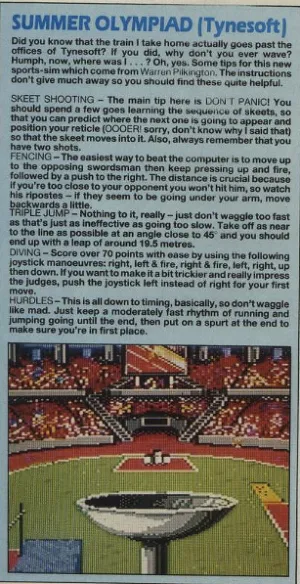
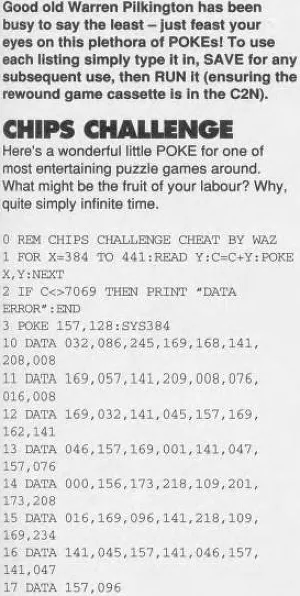
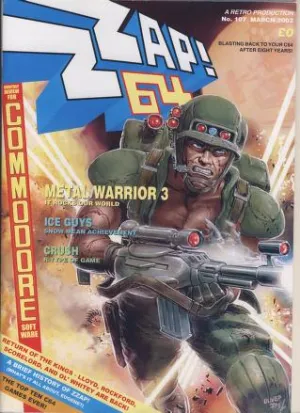
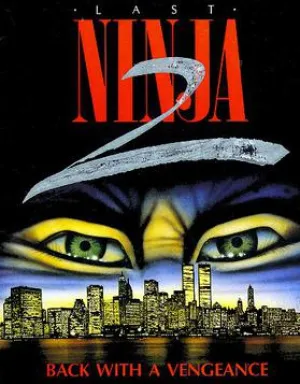
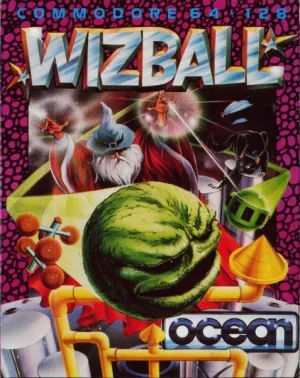
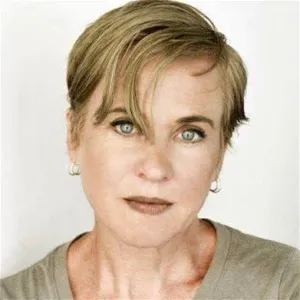
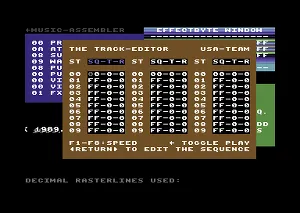
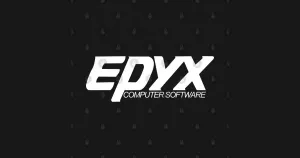
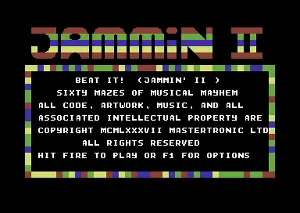
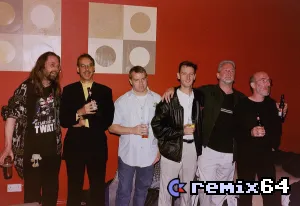
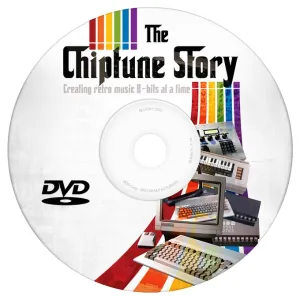










Comments